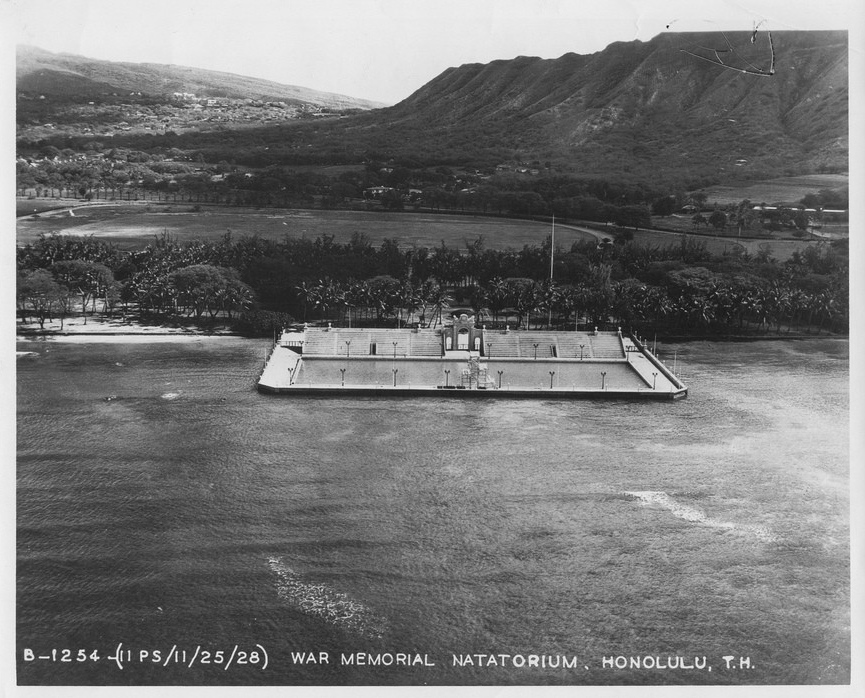
Kaimana Beach was originally a rocky beach with a narrow strip of sand. After the Waikiki War Memorial Natatorium was built the beach was able to accumulate a vastly wider sandy beach which makes it so popular today.

Kaimana Beach was the end point of the first submarine communications cable between California and Hawaii. Duke Kahanamoku’s uncle, David Piikoi, was said to have been the person who dragged the underwater cable through Kapua Channel and onto Kaimana’s shore in 1902. The first telegraphic message over this new cable was sent on January 1, 1903, from Henry Ernest Cooper to President Theodore Roosevelt in Washington, DC.
Completed in 1927, the Natatorium was built in the Hawaiian Beaux-Arts architectural style. The entrance to the memorial includes an arch featuring four stone eagles typical of this style.
Inside the memorial is a 100 meter by 40 meter salt water swimming pool. In the opening ceremonies on August 24, 1927, the local Olympic gold medal holder Duke Kahanamoku made the first swim (it was his birthday). In the following swim meet, world record holder Johnny Weissmuller won the 100, 400 and 800 meter events, and Buster Crabbe (also local) won the 1500 meters.
After the attack on Pearl Harbor in 1941, the natatorium was taken over by the US Army and used for training during World War II. In 1949 it was refurbished and turned over to the City and County of Honolulu on July 1, 1949. Its condition deteriorated, and was officially closed in 1963, but continued to be used.
It was added to the National Register of Historic Places listings in Oahu on August 11, 1980 as site 80001283.
There have been several proposals to demolish the structure, while others argue for its preservation and repair. For generations, the natatorium was a popular recreational gathering center for local residents and tourists.